Articles Menu
Aug. 25, 2021
Three notable things happened this past weekend in the annals of Fairy Creek, the watershed on southwest Vancouver Island that has become synonymous with an unshakeable movement to save British Columbia’s disappearing old-growth forests.
RCMP officers were accused of using excessive force against protesters who have blocked logging roads around Fairy Creek since last August, with videos and photographs circulating showing officers deploying cans of pepper spray against peaceful demonstrators and dropping 17-year-old Angus Johnson — who was dangling from a high tripod made from logs — onto the ground.
Secondly, RCMP made 40 arrests on Friday, 33 on Saturday and another eight on Sunday as part of its on-going efforts to enforce a court injunction granted to logging company Teal-Jones. Enforcement of the injunction has ramped up in August with 296 arrests, far surpassing previous monthly totals.
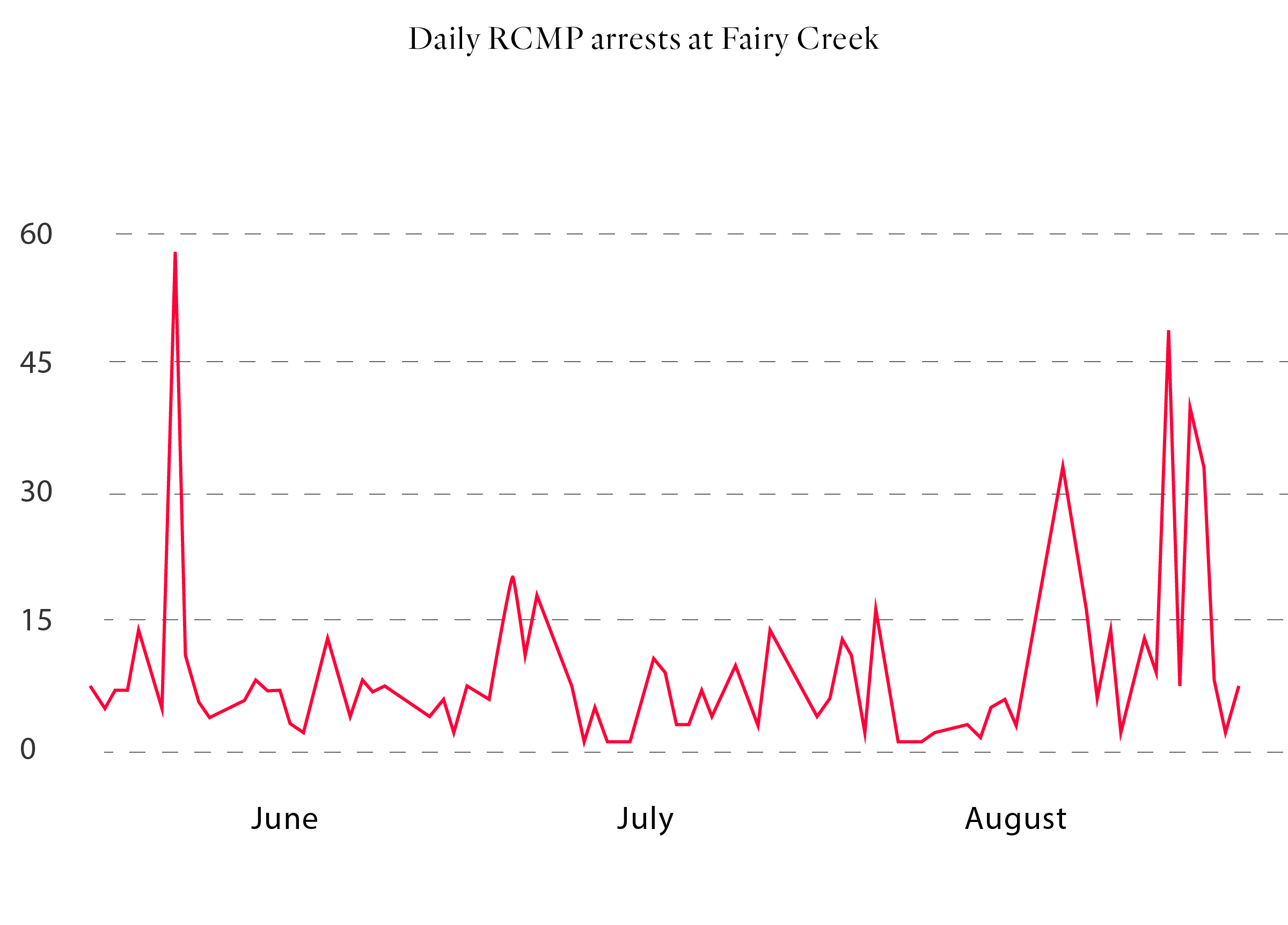
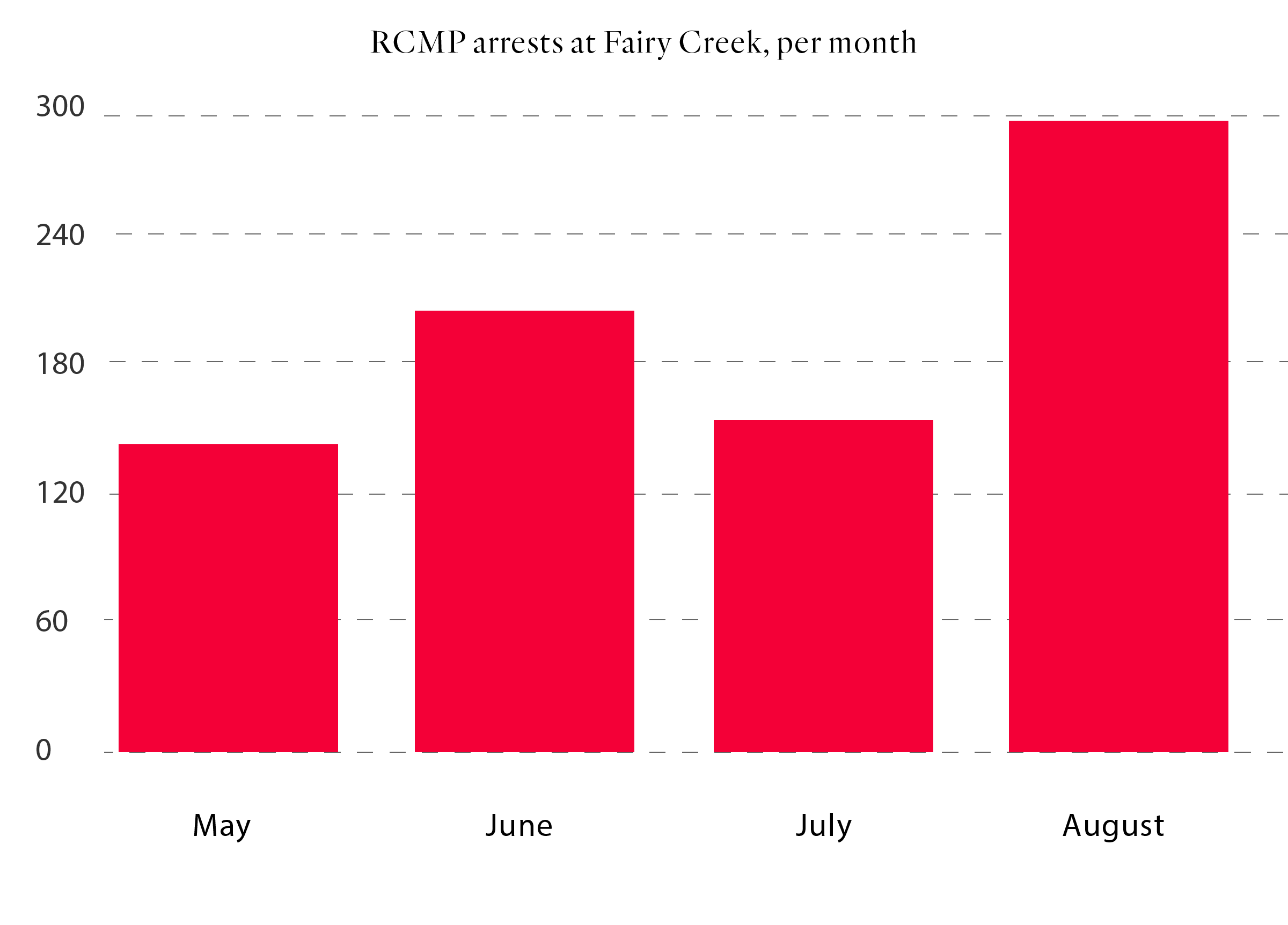
Following a review on Monday — when “RCMP Stand Down” protests took place outside detachments around the province — the police force assessed the total number of arrests at 796 since enforcement activities began in May.
That means only 61 arrests now stand between Fairy Creek and Canada’s civil disobedience record, set in 1993 when 856 people were arrested during the “war in the woods” over old-growth logging in Clayoquot Sound.
“This is getting close to one of the biggest acts of civil disobedience in Canadian history,” University of B.C. sociology professor David Tindall, who studies environmental movements, told The Narwhal. “I think it’s quite possible that the numbers will exceed Clayoquot Sound.”
And thirdly, as RCMP carried limp and disheveled Fairy Creek protesters to police vans, the federal Liberal Party announced it would establish a $50 million old-growth nature fund for B.C. and would work with partners “to attract additional funding to further support the protection of old-growth forests” if re-elected on Sept. 20.
Following the announcement, Jonathan Wilkinson, the Liberal incumbent in North Vancouver who served as Justin Trudeau’s environment minister, pinned a tweet saying B.C.’s iconic old-growth forests are increasingly under threat: “That’s why we’ll help support the BC gov, First Nations, and communities permanently protect them, and why I am disappointed that Mr. [Jagmeet] Singh, a Federal MP for BC [and the leader of the federal NDP], has been silent on permanent protection for old growth.”
Old-growth protection isn’t mentioned in the federal NDP’s election platform.
Ken Wu, executive director of the Endangered Ecosystems Alliance, which initiated a letter-writing campaign to the Trudeau government calling for federal funding to help protect B.C.’s most at-risk old-growth forests, said the old-growth nature fund announcement “gets the ball rolling” to save the last of the province’s old-growth.
“The province are the conservation laggards, who so far have essentially committed nothing significant for old-growth protection,” Wu said in an interview.
“Without the critical funding it’s all pie in the sky, and will default back largely to the status quo of liquidating the last of the old-growth.”
Unprotected old-growth forests are at risk all over B.C. Less than three per cent of the province’s biggest, most ecologically important old-growth remains, according to a report from a trio of independent scientists who used to work for the B.C. government.
In the interior, the rare inland temperate rainforest, home to endangered caribou and cedar trees more than 1,000 years old, is at imminent risk of clear-cutting. Earlier this year, a Prince George-based forestry company applied for an exploratory permit to build a logging road through a provincial protected area in the intact Raush River Valley near McBride to access rare old-growth stands.
Fairy Creek, which is a two-hour drive from the provincial capital of Victoria, remains the epicentre for protests and a symbol of the on-going destruction of B.C.’s old-growth — even after the NDP government announced a two-year deferral on old-growth logging in Fairy Creek and the central Walbran Valley in June. The Pacheedaht First Nation has asked campers and protesters to leave its traditional territory, saying the nation does not welcome unsolicited involvement or interference from others and requesting that it be left alone to work out details of an integrated resource stewardship plan on its territory.
Despite the deferrals, made at the request of the Pacheedaht, Ditidaht and Huu-ay-aht First Nations, protesters and campers remain adamant in their refusal to leave the Fairy Creek area, pointing to old-growth forests slated for imminent logging by Teal-Jones in nearby watersheds — including on Edinburgh Mountain to the west of Fairy Creek, the Caycuse Valley in Ditidaht territory to the north and in other parts of the Walbran Valley further west.
Tindall said whether or not the Fairy Creek protests and arrests go down in history books as an event on par with the Clayoquot Sound protests, or as something even more noteworthy, depends in large part on the provincial government’s response.
“Clayoquot Sound was a big deal because it was the first event of its type. To a certain extent it was successful,” he said, noting the absence of large-scale industrial logging in old-growth Clayoquot Sound valleys since the mass arrests.
“If they [the provincial government] decide to significantly wind down logging in old-growth forests, then I think it does have the possibility of linkage — now we [would] have all of these old-growth forests in British Columbia in perpetuity and this can be tied back to Fairy Creek. If they just resume business as usual then it will have a different kind of legacy.”
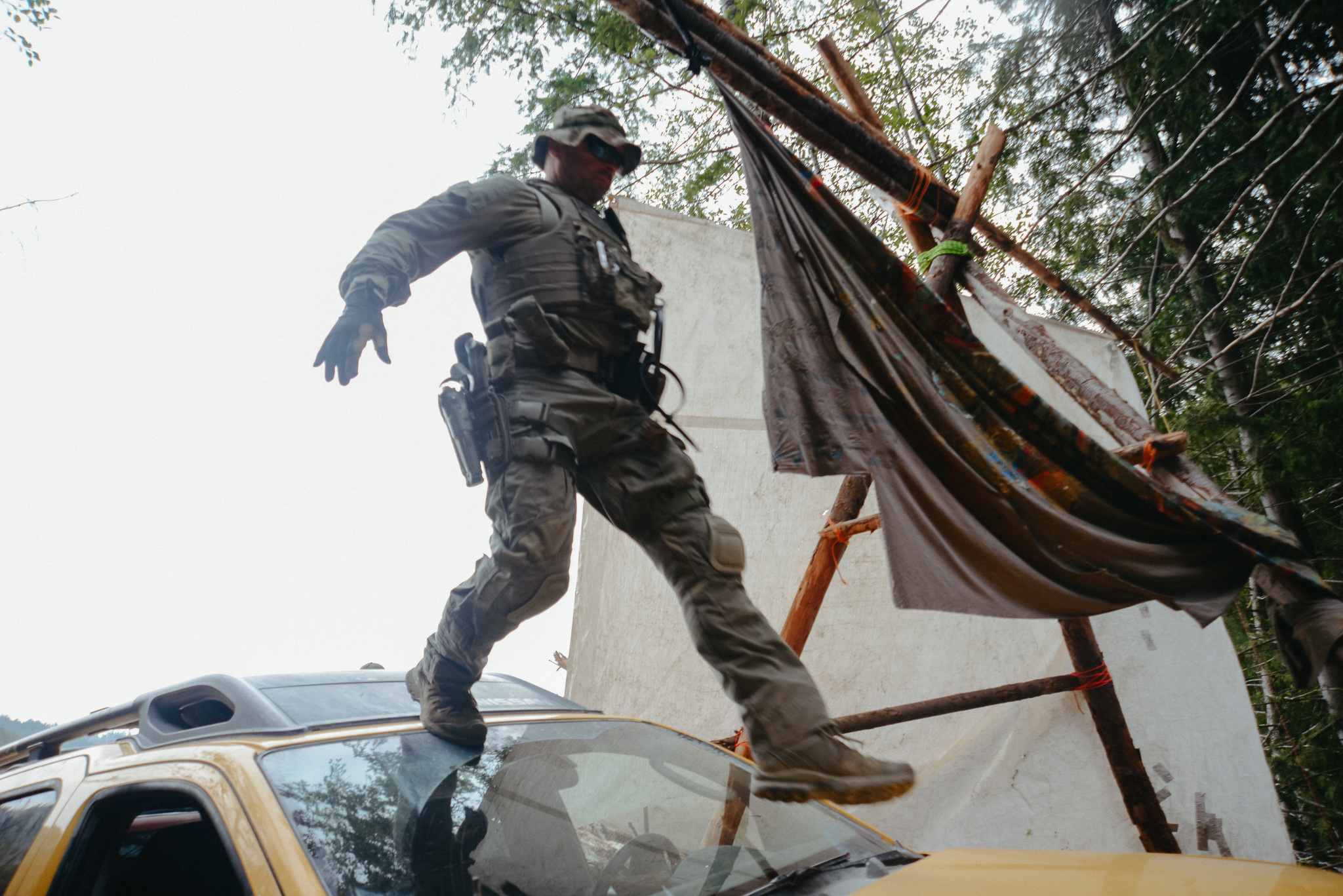
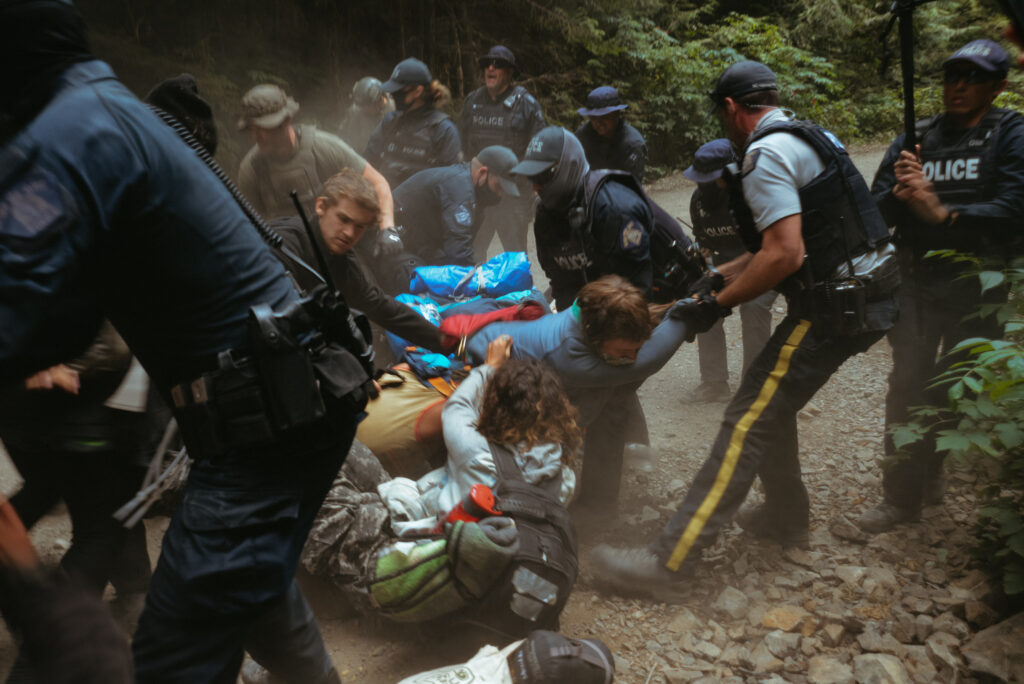
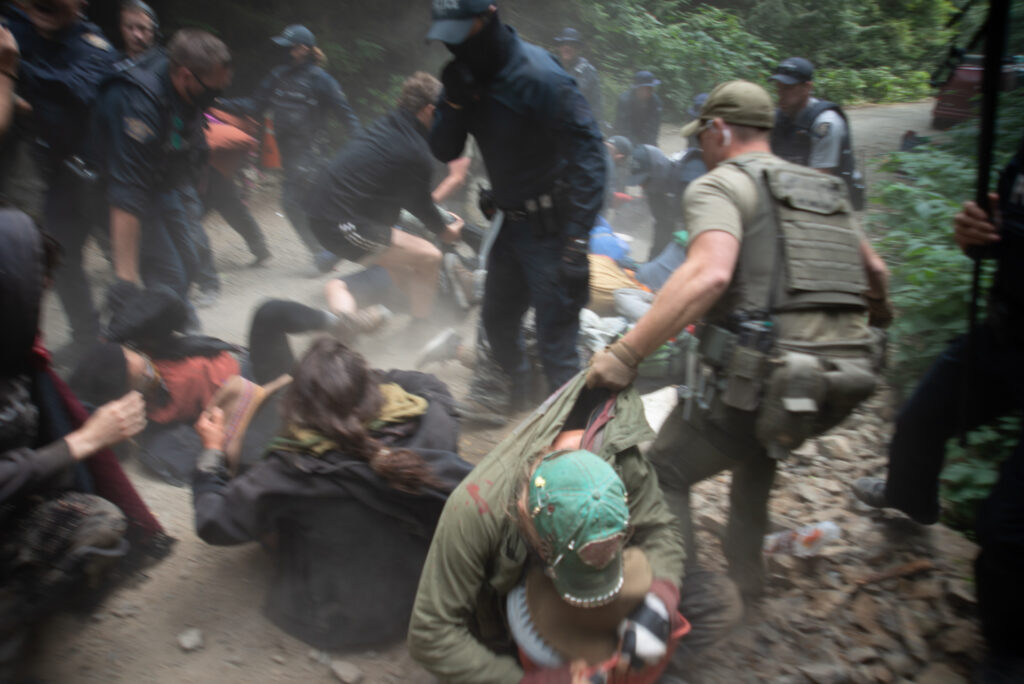
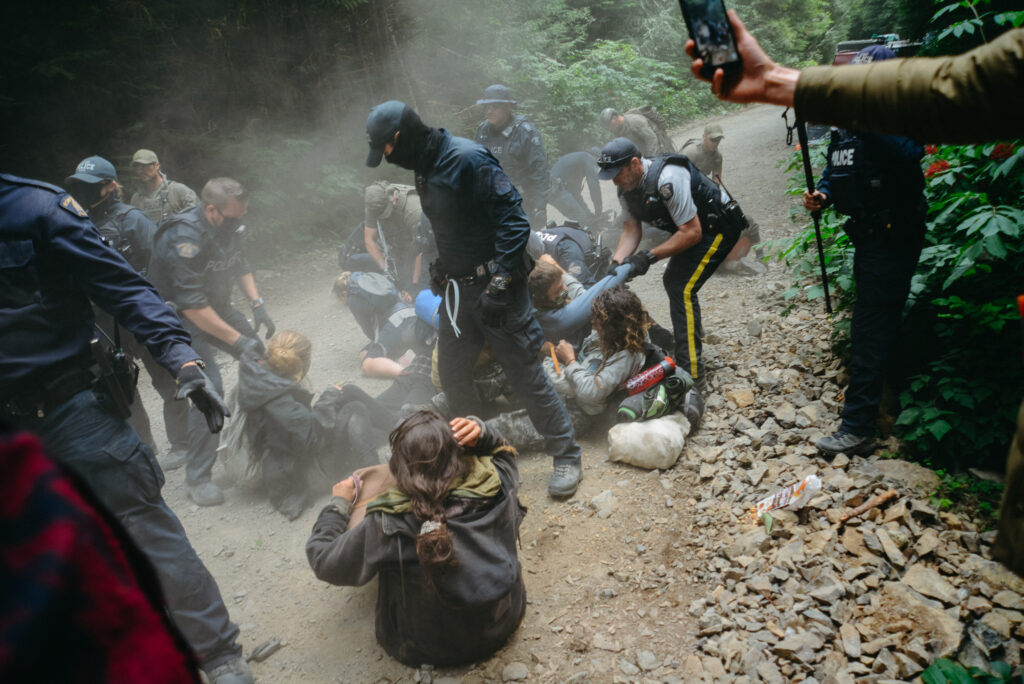
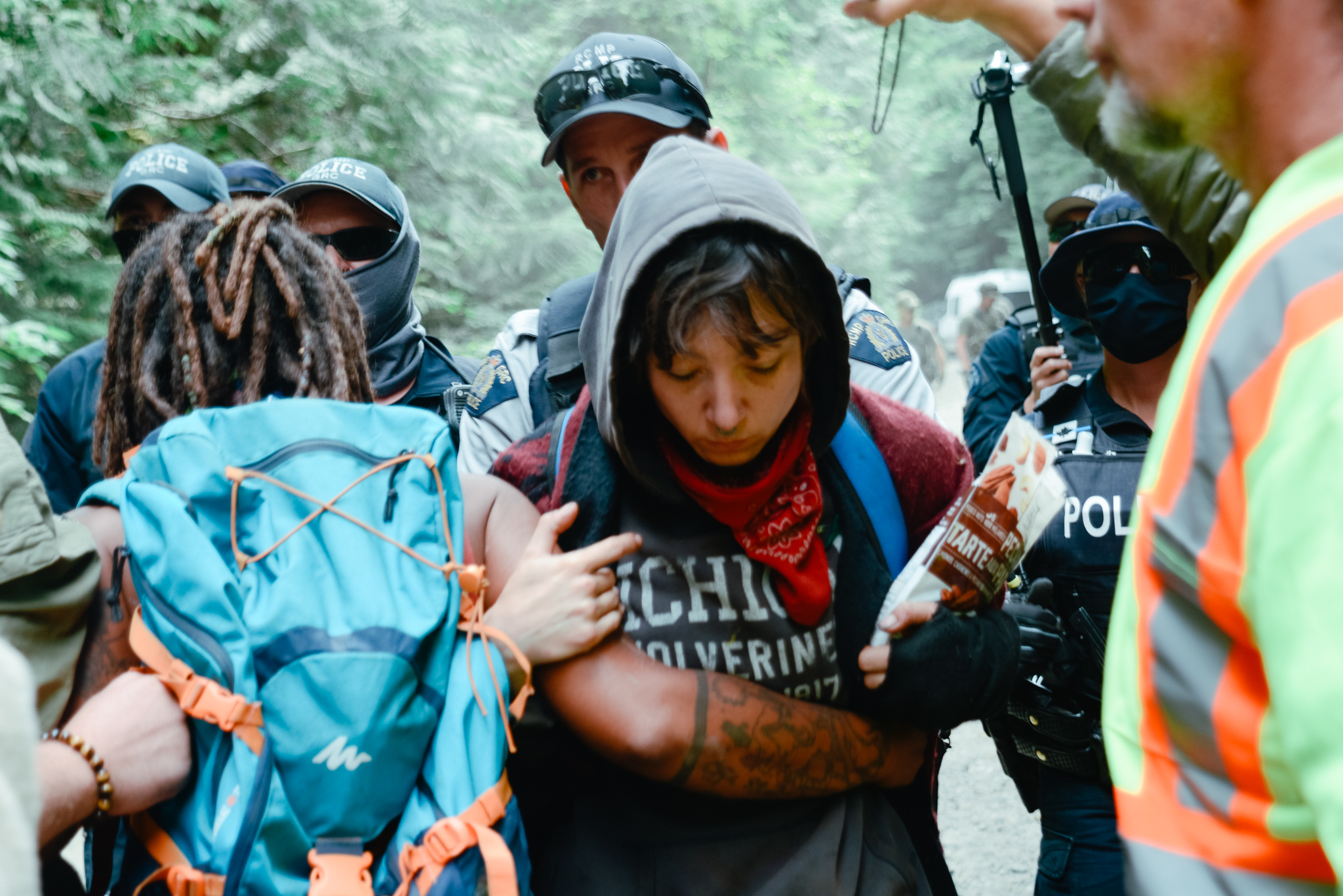
Business as usual is what Wu and others are trying to avoid. The Endangered Ecosystems Alliance, the Union of B.C. Indian Chiefs and other groups are calling for conservation financing to preserve the last of B.C.’s unprotected old-growth forests, noting that old forests are essential to Indigenous cultures, supply clean water and carbon storage and support wild salmon and major tourism and recreation industries.
Wu said a minimum of $600 million is needed to create Indigenous Protected and Conserved Areas, First Nations land-use plans and a land acquisition fund for private lands that contain critically important old-growth.
First Nations communities need an economic alternative to the dependency on old-growth logging that has been fostered by successive provincial governments, said Wu, who is also the founder and a board member of the Ancient Forest Alliance, a non-profit organization that aims to end logging in B.C.’s endangered old-growth forests.
“Without an equivalent economic alternative to old-growth logging — in, say, tourism, clean energy, non-timber forest products, sustainable seafood, as well as value added second-growth forestry — it’s unrealistic and unreasonable to expect that most First Nations will walk away from some of the largest sources of revenue they have in their communities.”
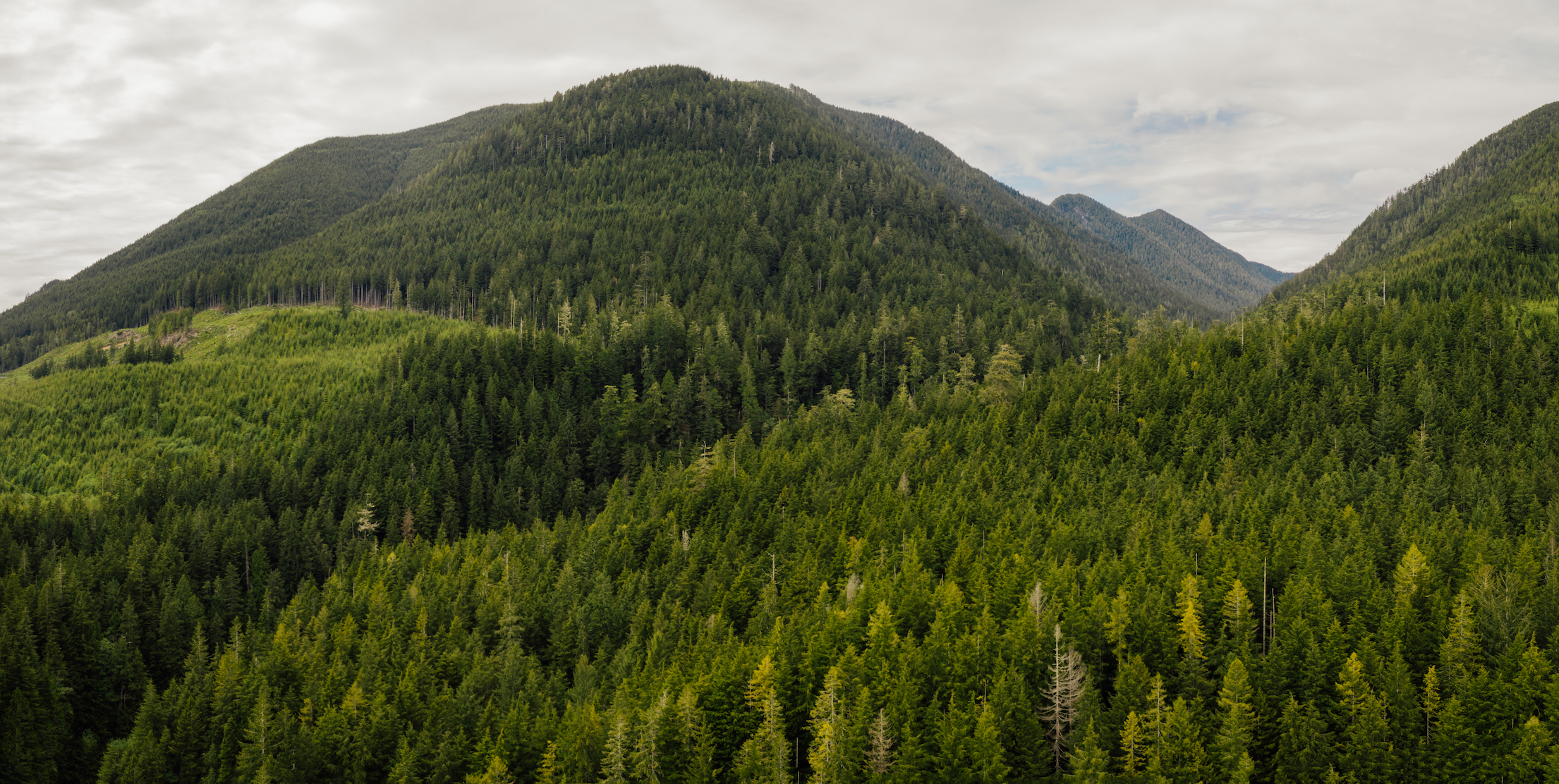
Wu said the federal Liberals had already opened the door to financially supporting a transition away from old-growth logging in B.C., with the government’s previous commitment of $2.3 billion for a nature fund to finance the creation of new protected areas, in keeping with national and international targets to address the global biodiversity crisis. He described the $50 million pledge as a “most welcome” addition.
“There’s a lot of cynicism in progressive movements, including in the ancient forest movement about this step,” Wu noted. “It’s what we had asked for. It just has to be scaled up now.”
The first step in “scaling up” old-growth protections is for the federal government to earmark a set portion of the $2.3 billion to conserve old-growth and finance Indigenous Guardian programs and endangered species protection, he said.
“The biggest glaring gap is the lack of funding commitment for old-growth from the B.C. government … This puts the spotlight on the BC NDP to move.”
Kukpi7 Judy Wilson, secretary-treasurer for Union of B.C. Indian Chiefs, said the B.C. government has exacerbated tensions at Fairy Creek by not adequately responding to 14 recommendations made last year by an independent old-growth strategic review panel led by foresters Al Gorley and Garry Merkel.
Those recommendations, submitted to the B.C. government in April 2020, called for immediate logging deferrals in old forests “where ecosystems are at very high and near-term risk of irreversible biodiversity loss.”
“There are a lot of issues to be addressed here,” Kukpi7 Wilson said. “But we need to do it without the police force using a heavy hand. It’s not a very good image.”
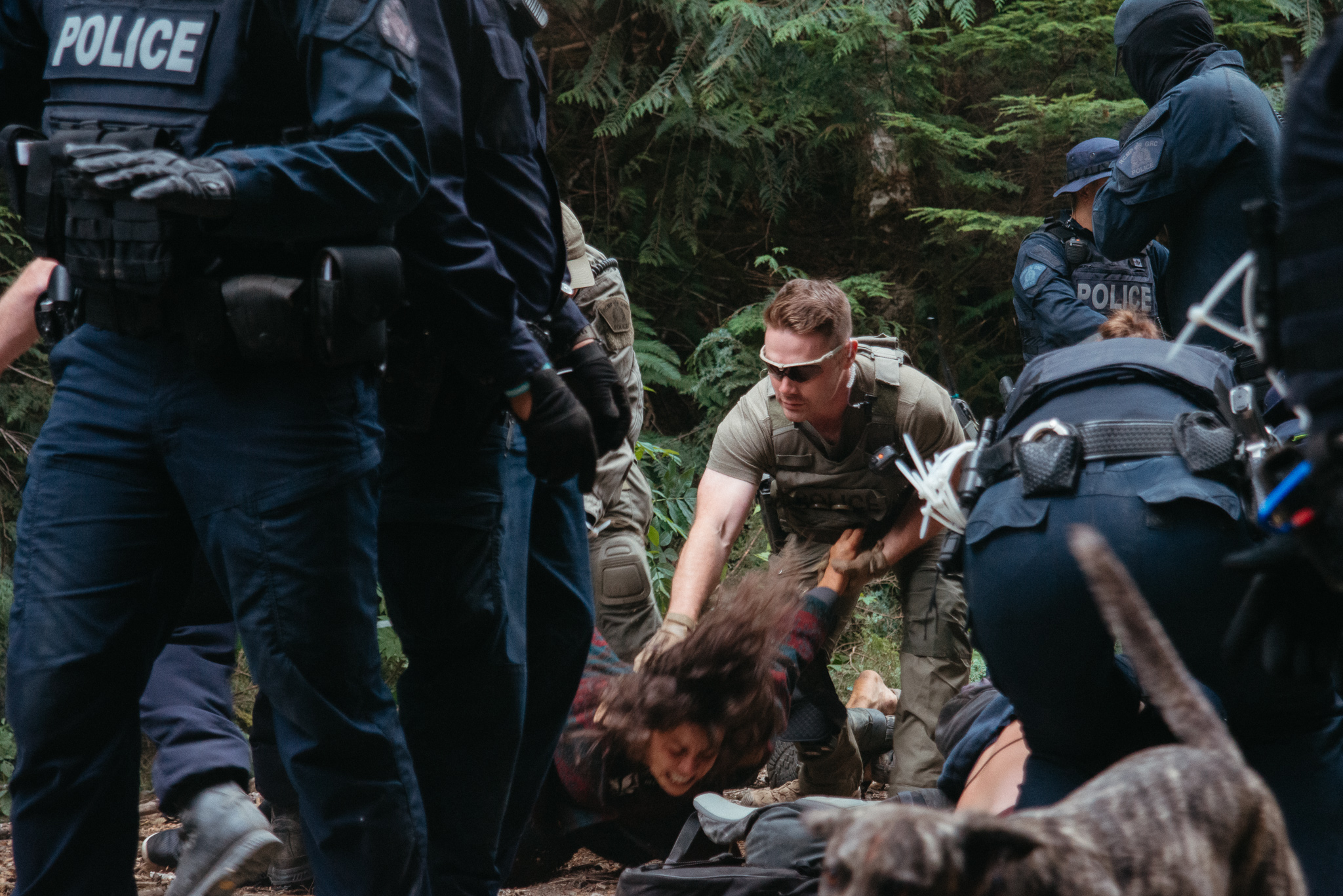
“We see the excessive use of violence happening to land defenders or water protectors or people standing up for the environment. The rights of the people need to be respected. And I’d go further and say the rights of nature need to be respected.”
In a statement released on Aug. 19, the RCMP said: “We would caution anyone viewing these videos and reading comments to keep in mind that they do not capture the events and lengthy efforts (often hours) leading up to, or following the arrests or attempts of arrests of individuals.”
The force also addressed the use of tripods by protesters. “Despite claims of inhumane treatment, our officers have taken many precautions to ensure that all protesters are removed from these devices as slowly and safely as possible.”
The increased RCMP enforcement action comes as the federal Conservative Party, led by Erin O’Toole, proposes to amend Canada’s Criminal Code to stop protests that disrupt key infrastructure such as pipelines or railways.
“Peaceful protest is a fundamental right in Canada, but respect for the rule of law means that illegal blockades that shut down critical infrastructure, threaten access to vital supplies, or endanger lives cannot be tolerated,” the Conservative proposal reads.
“What are they planning to do, throw thousands and thousands of Canadians in jail for protecting what is essential to life?” Kukpi7 Wilson asked. “It’s a backward look at what the priorities really are. Our priorities at this time should be looking at ways to create a better life for our children and grandchildren.”
That can only be accomplished by addressing pressing environmental issues such as climate change and old-growth protection, she said.
In an emailed response to questions, B.C.’s Ministry of Public Safety and Solicitor General said the Fairy Creek enforcement action “is an operational matter for the RCMP and is entirely at arms’ length from government.”
The statement pointed to comments Premier John Horgan made during an Aug. 23 press conference when he was asked about allegations of excessive police force at Fairy Creek. Horgan underscored that law enforcement does not take direction from the government.
“They make choices based on how courts direct them and they’ve been directed to enforce the injunction,” the premier told reporters. He also said the objective set out by the protesters appears to have been achieved with the old-growth logging deferrals in Fairy Creek, the last unprotected, relatively intact watershed on southwest Vancouver Island.
“The Pacheedaht have said quite clearly, not once not twice not three times but five times, ‘please leave our territory and allow us to resolve these issues on our lands, in our way,’” Horgan pointed out, saying he hopes the confrontation will come to an end.
Tindall said one difference between the Fairy Creek and Clayoquot Sound protests and arrests is that the environmental stakes are far higher in 2021 than they were in 1993.
“There’s a bigger sense of crisis now in a couple of different ways. With Clayoquot Sound, people thought the old-growth forests there were special and magical … I think a lot of the people who are protesting now are seeing [Fairy Creek] as among the very last old-growth. It’s not just ‘isn’t this a shame that we’re cutting this down’ but, from the point of view of the protesters ‘this is it, we’re liquidating the last of our old-growth forests.’”
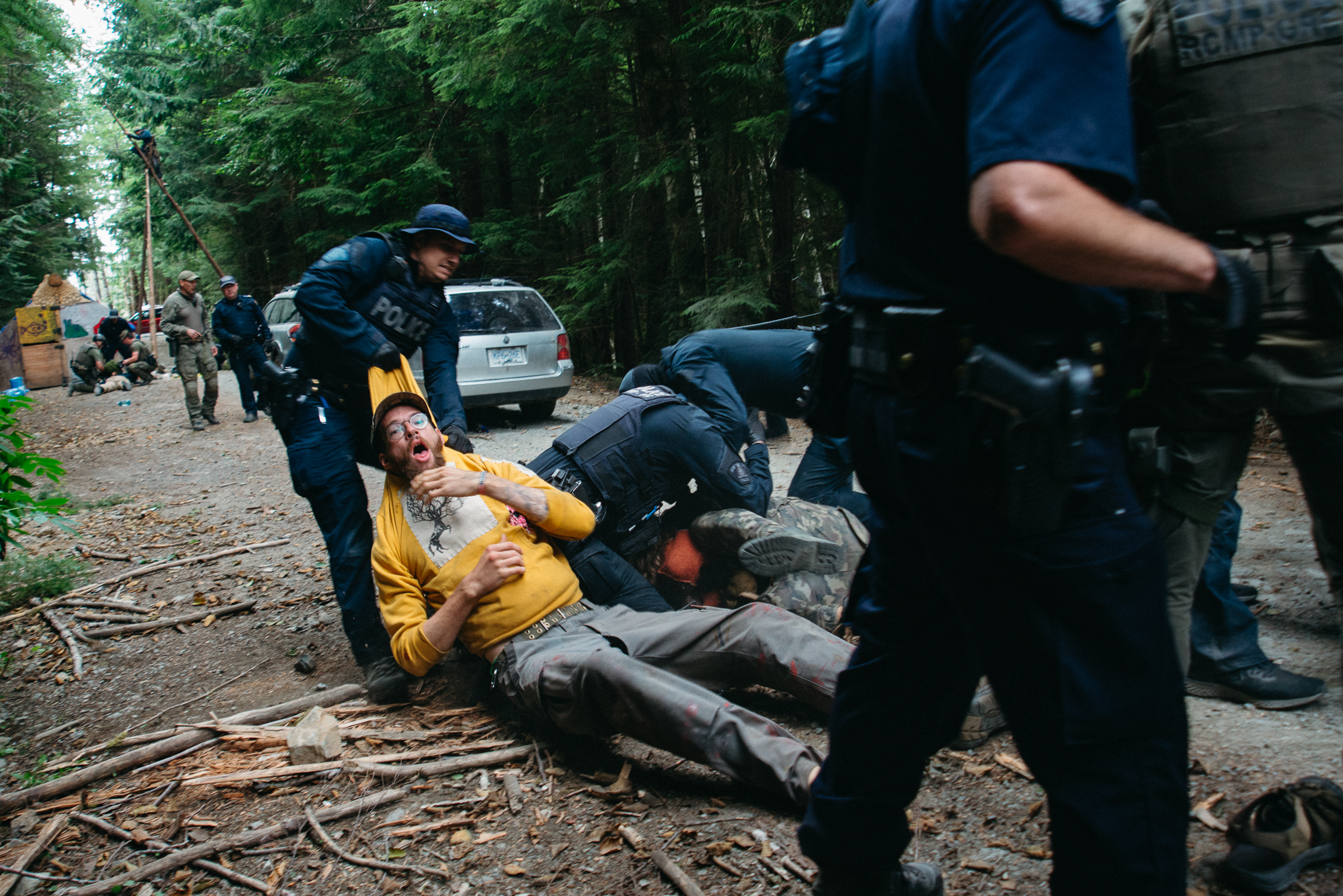
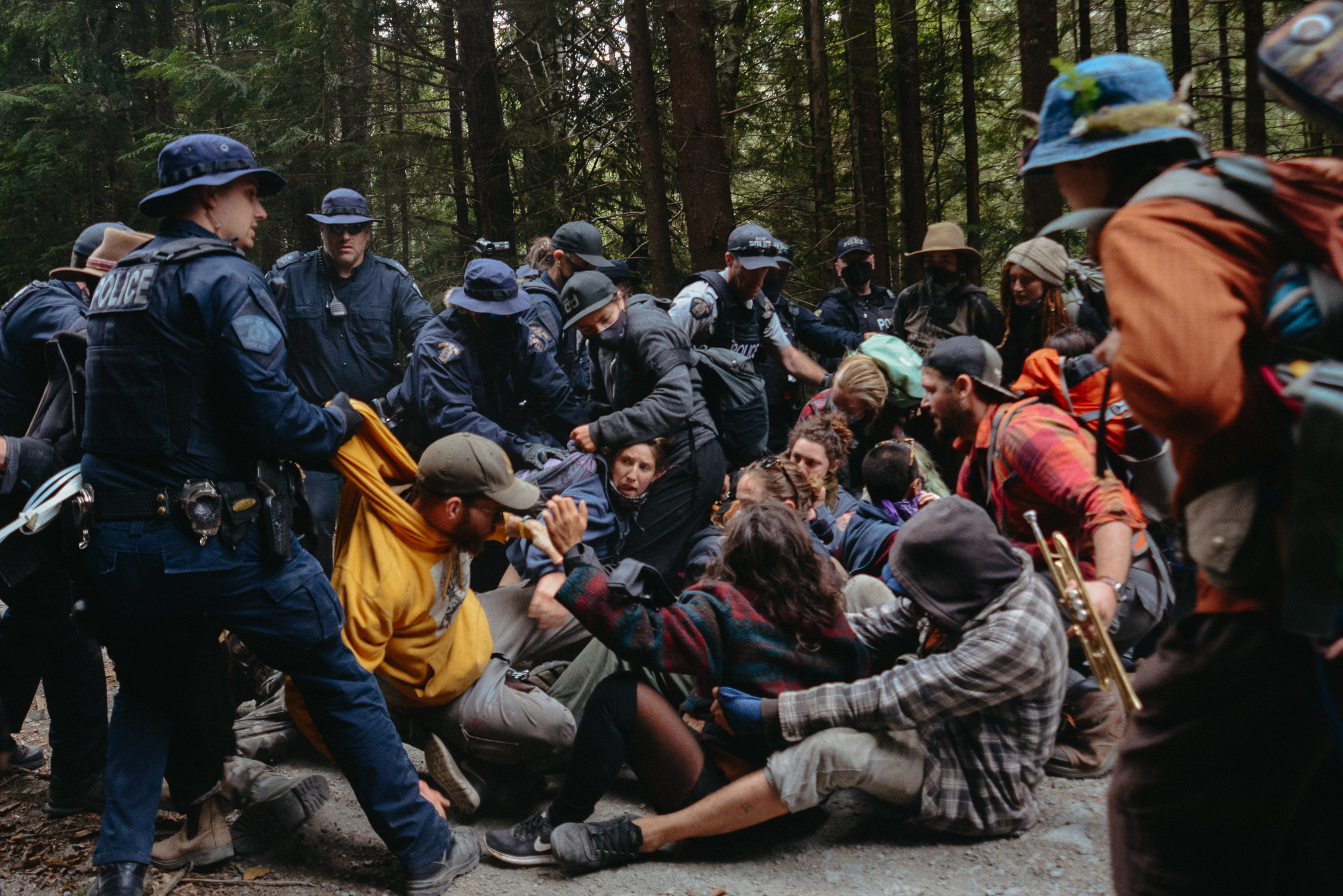
The old-growth issue also overlaps with climate change, Tindall points out. “This is a crisis. And a crisis demands unusual actions and commitment and so on. The sense that this is a crisis and that this is the end of the possibilities for protecting these areas makes it somewhat different.”
In an emailed response to questions, the B.C. Ministry of Forests, Lands, Natural Resource Operations and Rural Development said it cannot comment on the Liberals’ federal election promise to dedicate $50 million to a B.C. old-growth nature fund.
The ministry said it is working to implement all 14 recommendations made by Gorley and Merkel.
Last September, when it made the Gorley and Merkel report available to the public, the minority NDP government announced old-growth logging deferrals for two years in nine areas, totalling 353,000 hectares. Ten days later, the BC NDP called a snap election and took out campaign ads saying it had “protected” 353,000 hectares of old-growth.
But mapping subsequently revealed that much of the deferral areas were already under some sort of protection, had already been logged or consisted of non-forested areas.
Scientists Karen Price, Rachel Holt and David Daust estimated that only about 3,800 hectares of B.C.’s remaining productive old-growth was included in the nine deferral areas. Price and her colleagues — all of whom were later appointed to an old-growth technical review panel — also found that only 415,000 hectares of productive old-growth forests are left in B.C.
High productivity forests, where the biggest trees are found, contain the greatest biodiversity and are home to the most endangered species, such as mountain caribou, northern goshawk and fisher, a charismatic and reclusive member of the weasel family that, in B.C., dens only in five species of old trees.
The forests ministry said it expects to announce additional old-growth logging deferrals “soon.”
Tindall said he doubts the old-growth logging deferrals in the Fairy Creek and central Walbran would have occurred in the absence of protests.
“In a scientific sense it’s always hard to demonstrate the cause and effect,” he said. “But my opinion is these things definitely would not have happened.”
Tindall said he’s at a loss to explain why RCMP would engage in the type of forceful action brutality depicted in recent social media about Fairy Creek, especially because they seemed to be “very patient and to stand back” in the early days enforcing the injunction.
“When this type of stuff happens, this can really affect public opinion,” he said, “especially when the people who are attacked don’t seem to deserve it or don’t seem threatening.”
August 25, 2021, at 7 p.m. PT: This article was updated to clarify that David Tindall is a professor at the University of B.C., not at Simon Fraser University as previously stated.